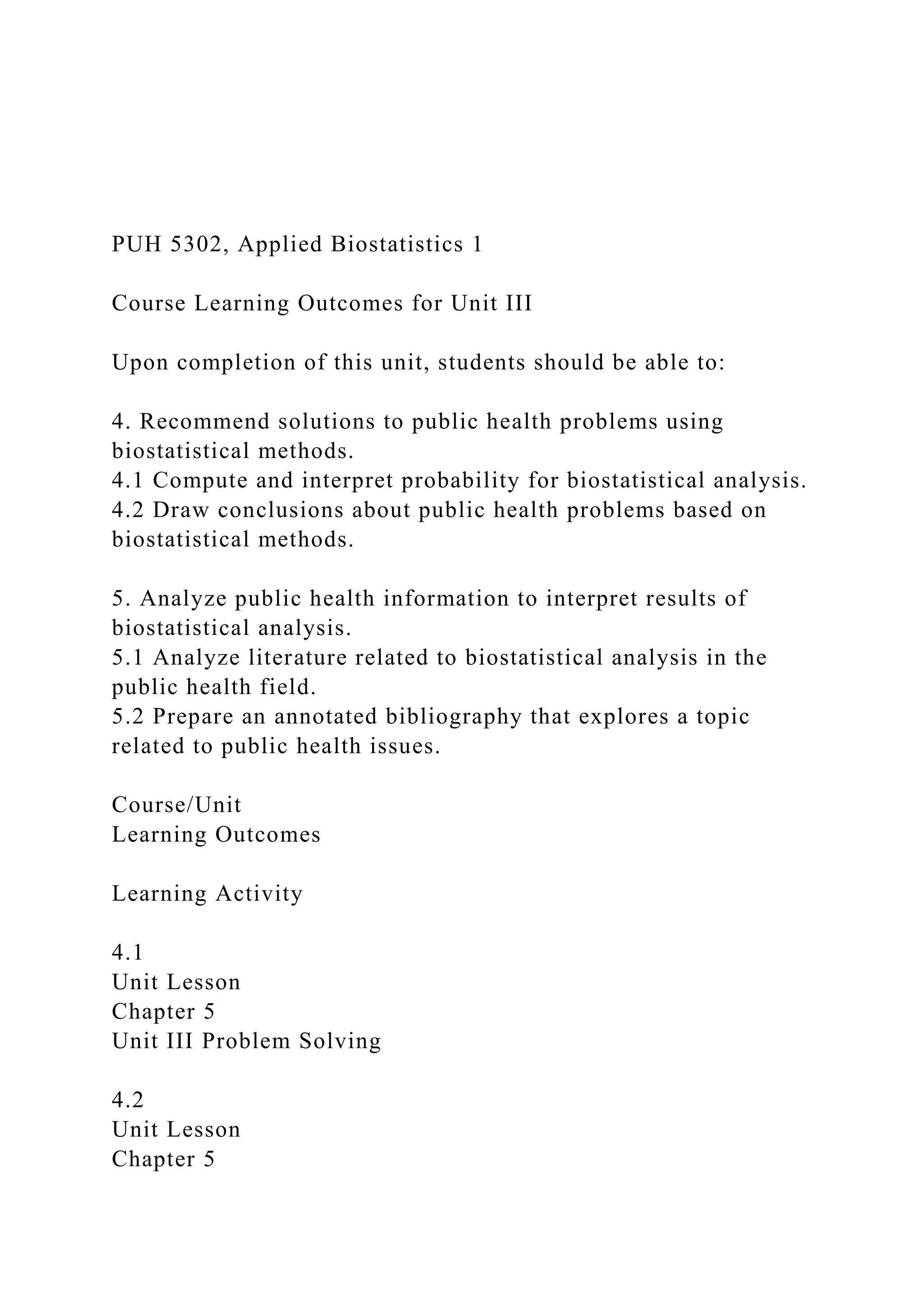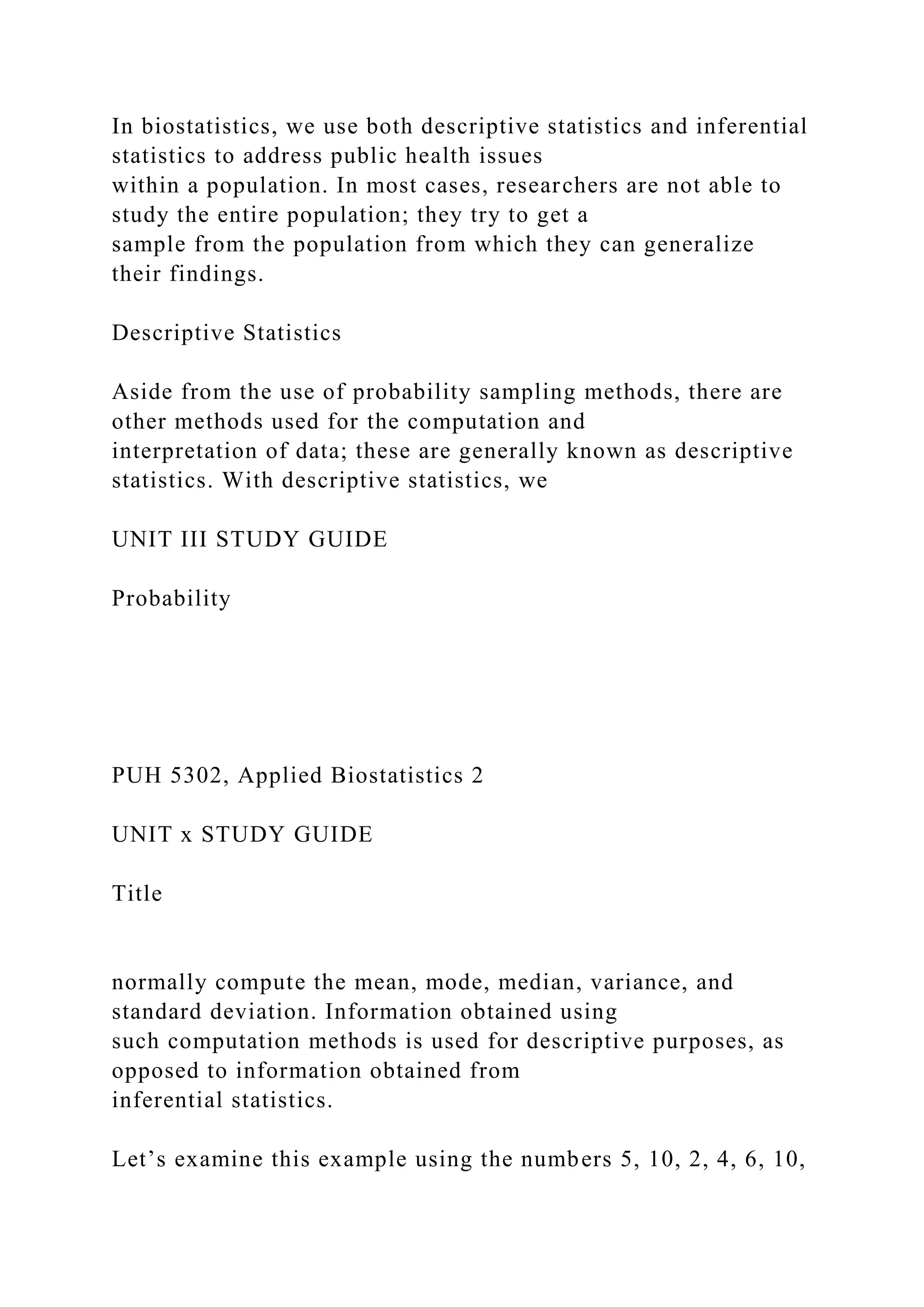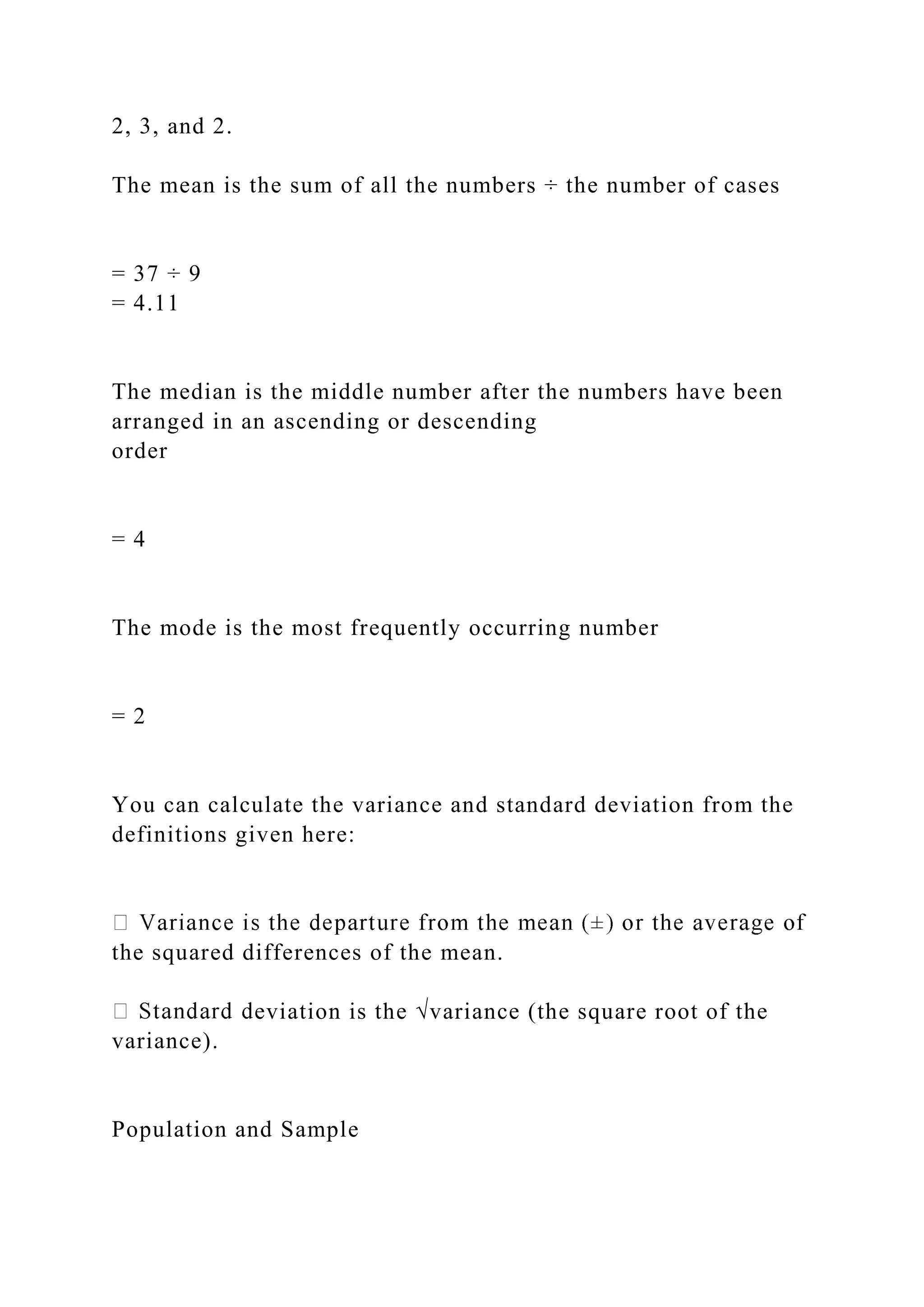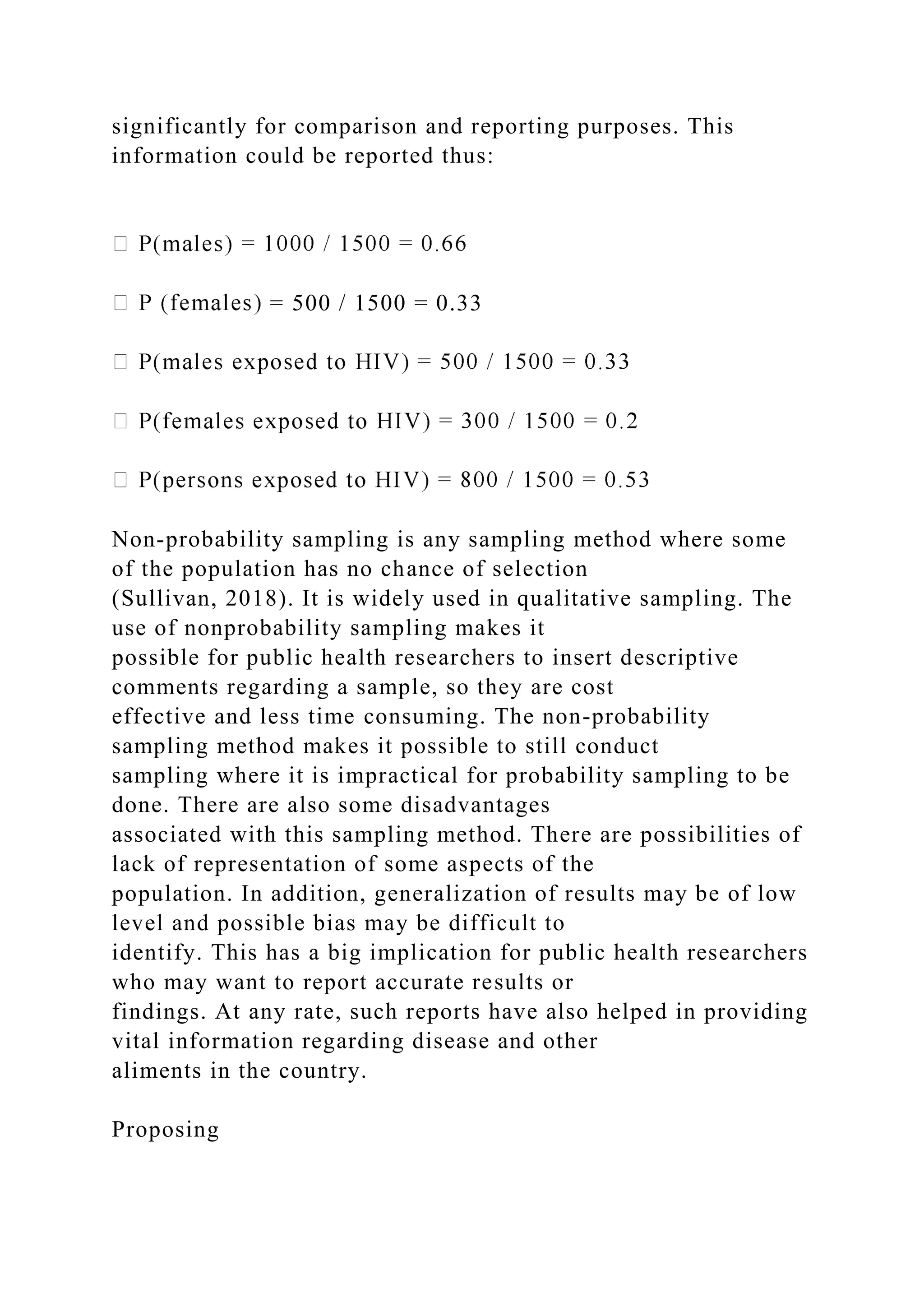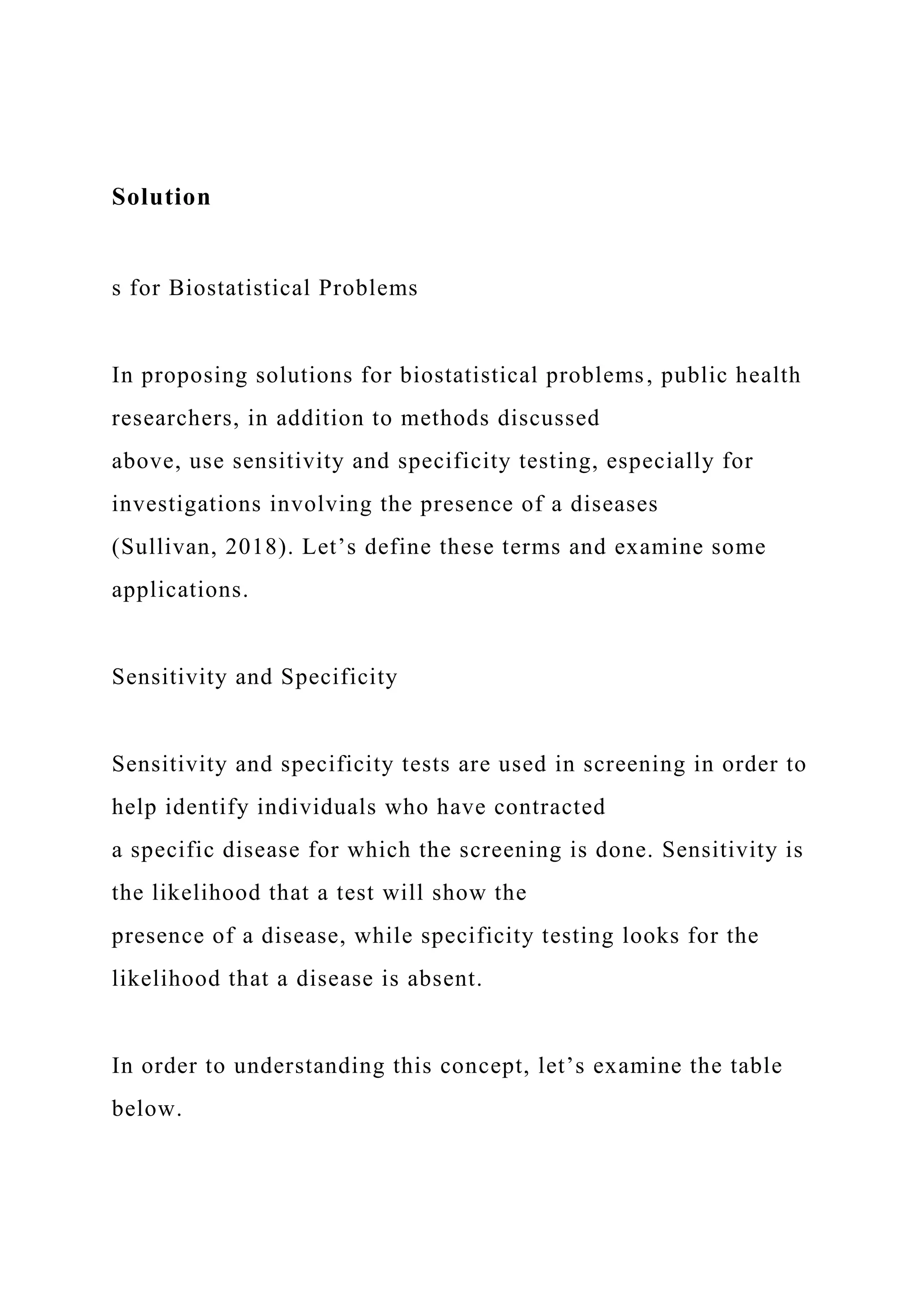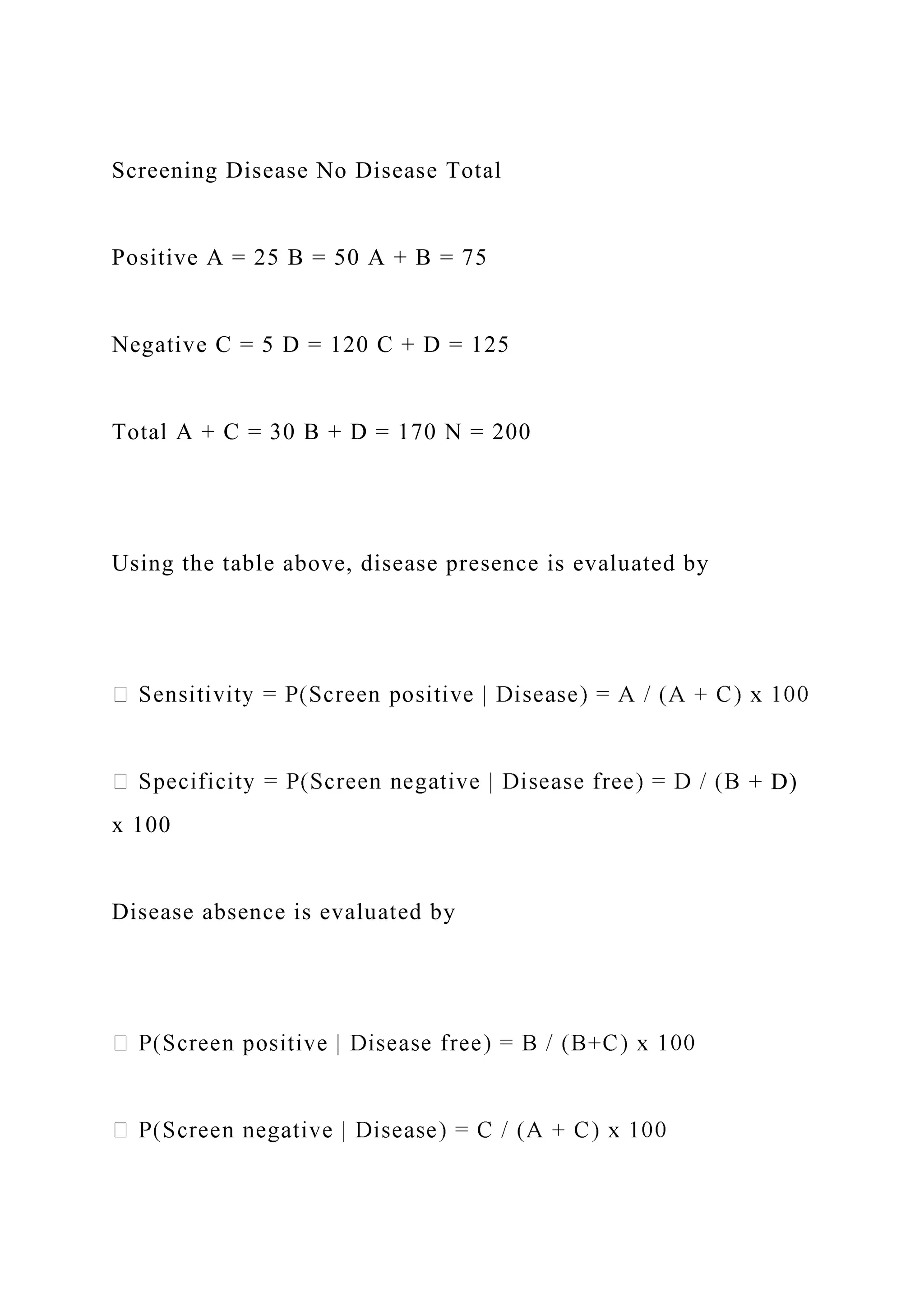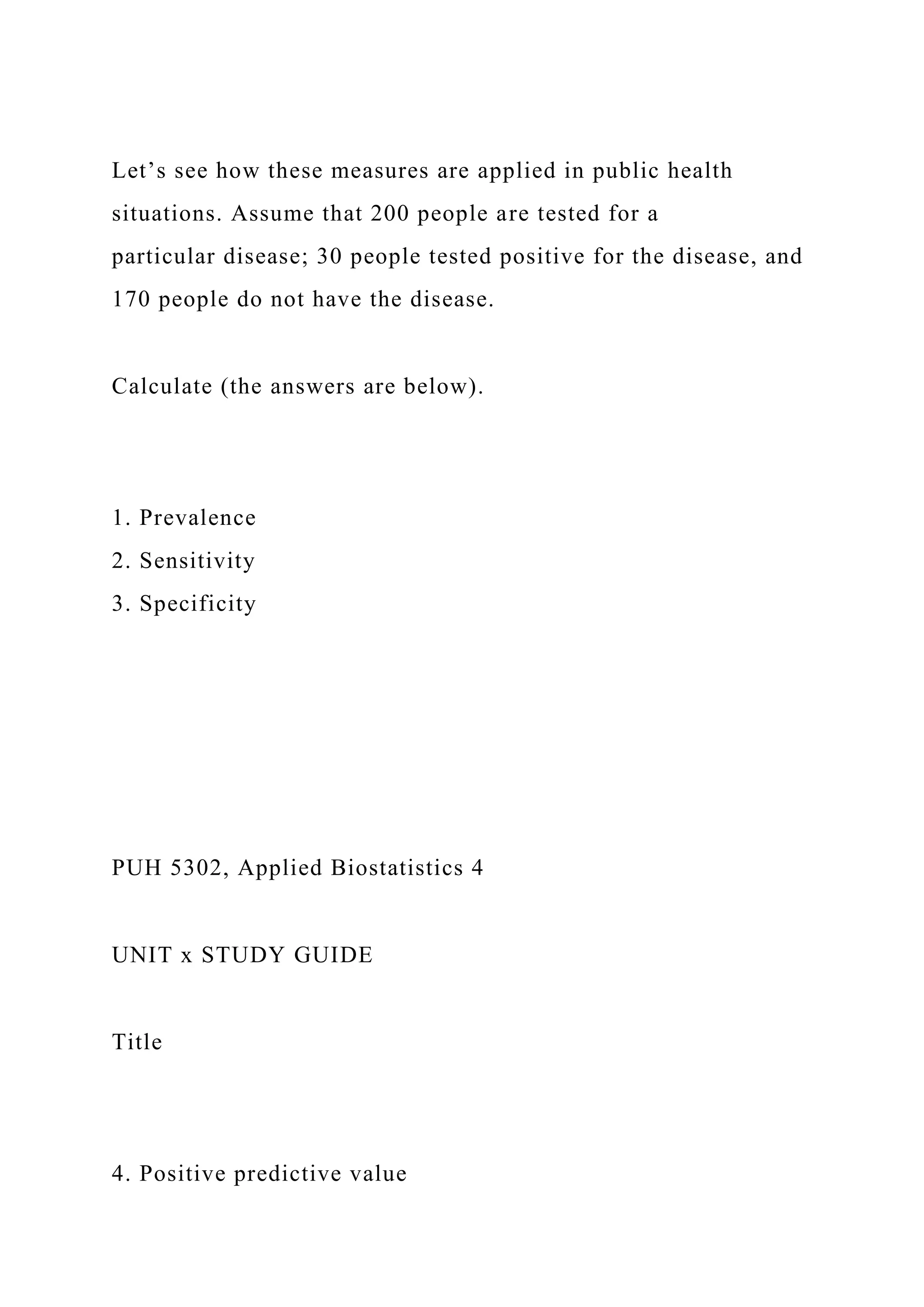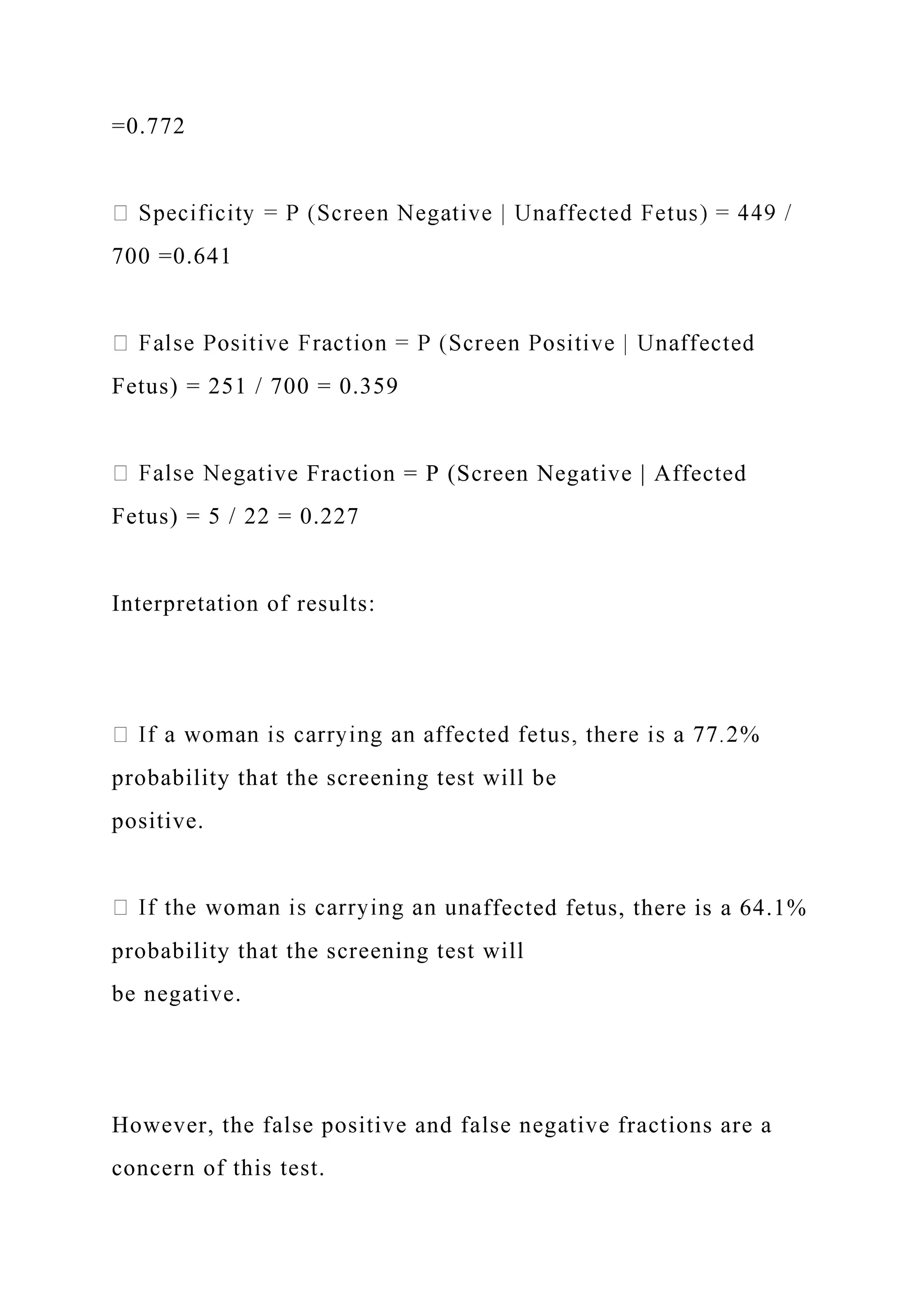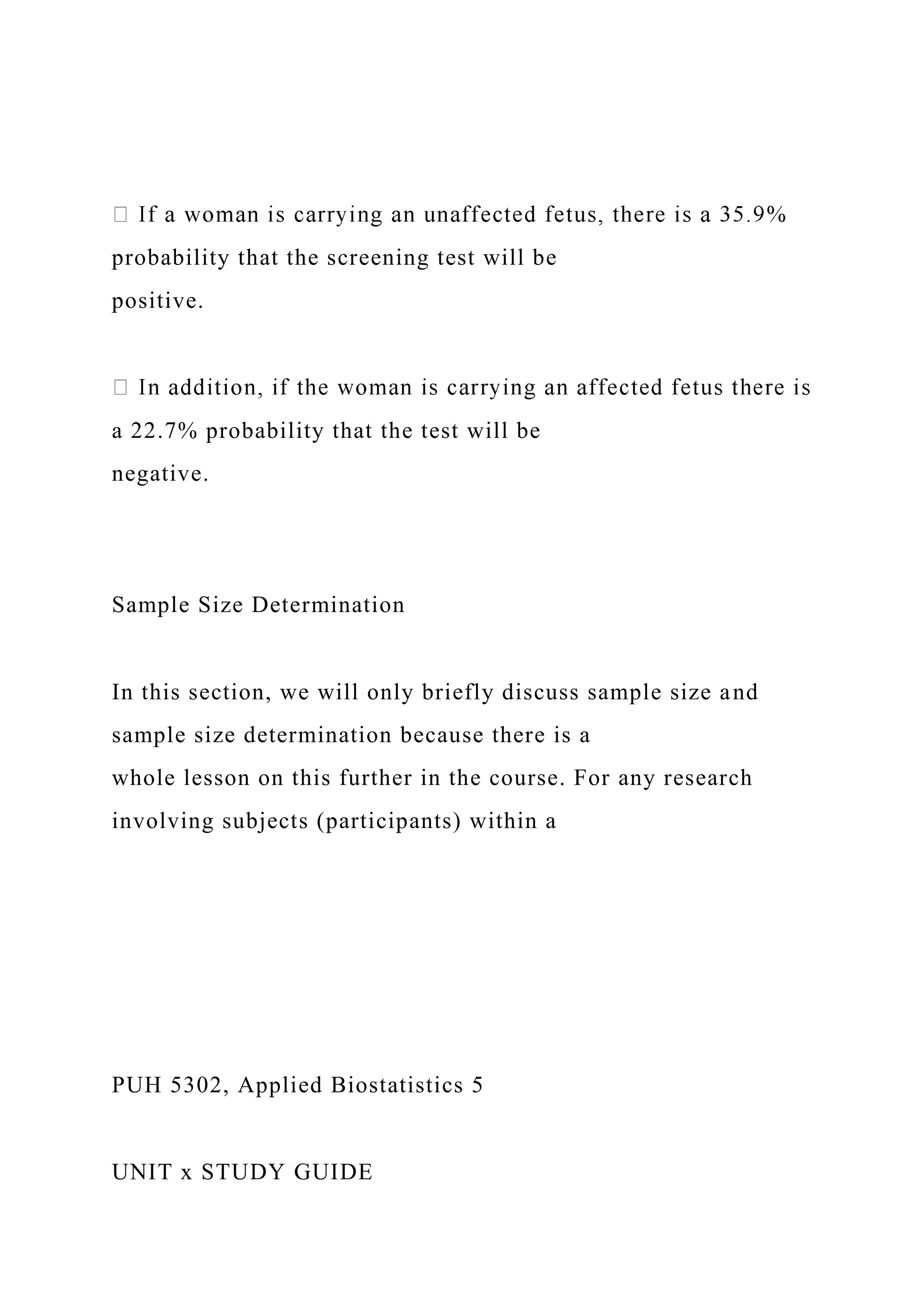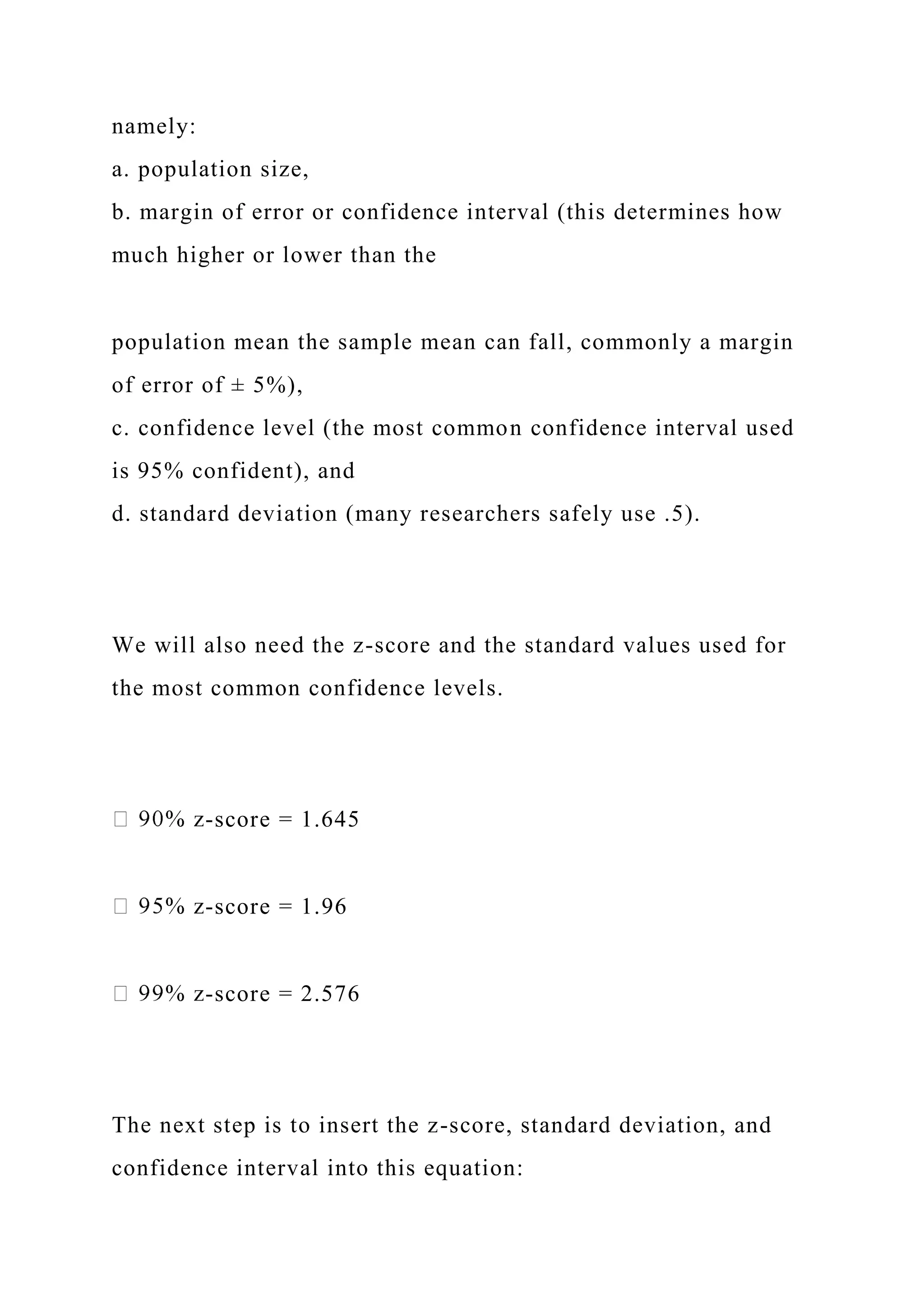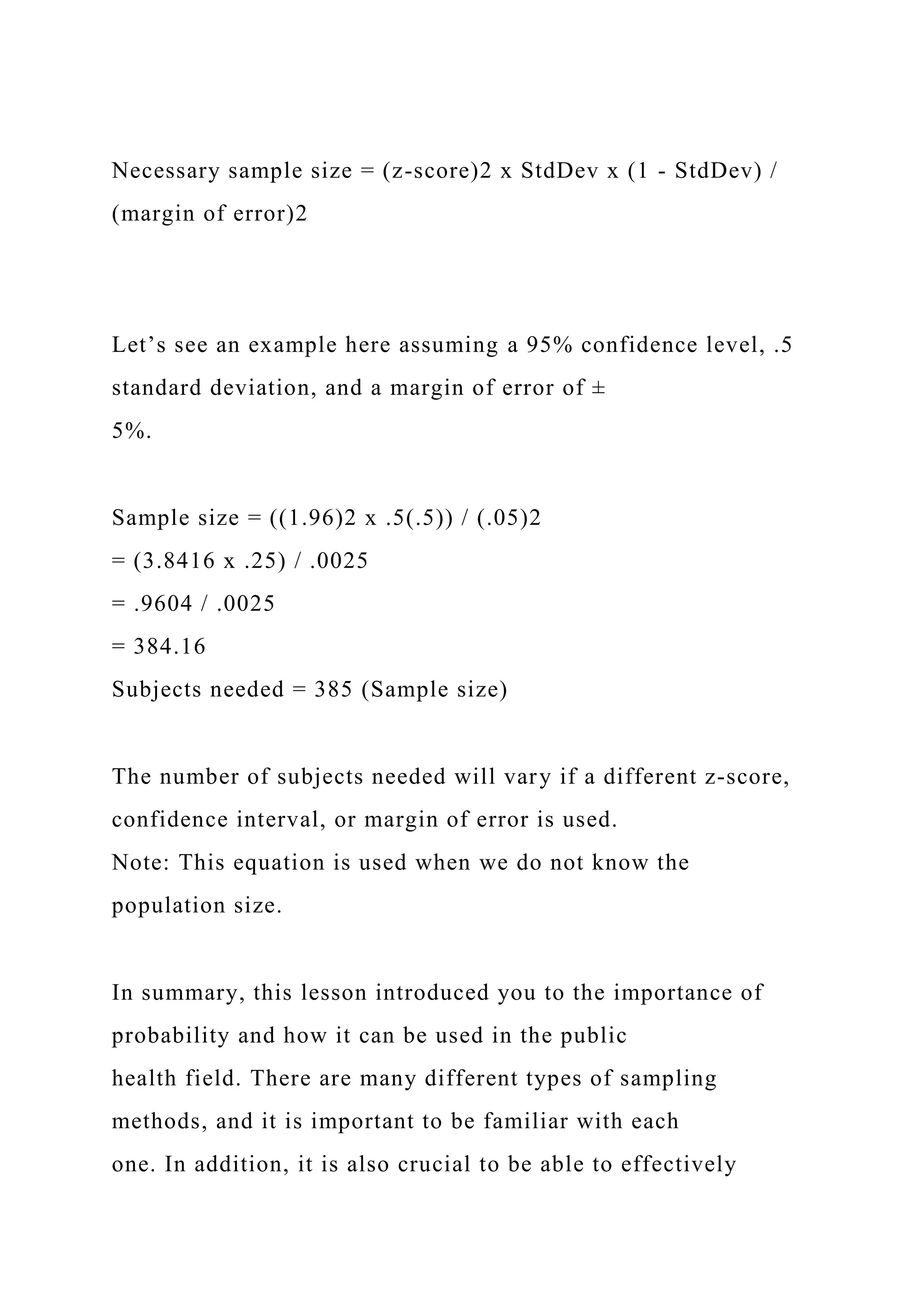The document outlines the learning outcomes for Unit III of the Applied Biostatistics course, focusing on computing, interpreting, and applying probability in public health contexts. It discusses sampling methods, the importance of sample size, and the use of statistical measures such as sensitivity and specificity in disease screening. Additionally, it emphasizes the significance of using appropriate statistical techniques to provide accurate insights into public health issues.
